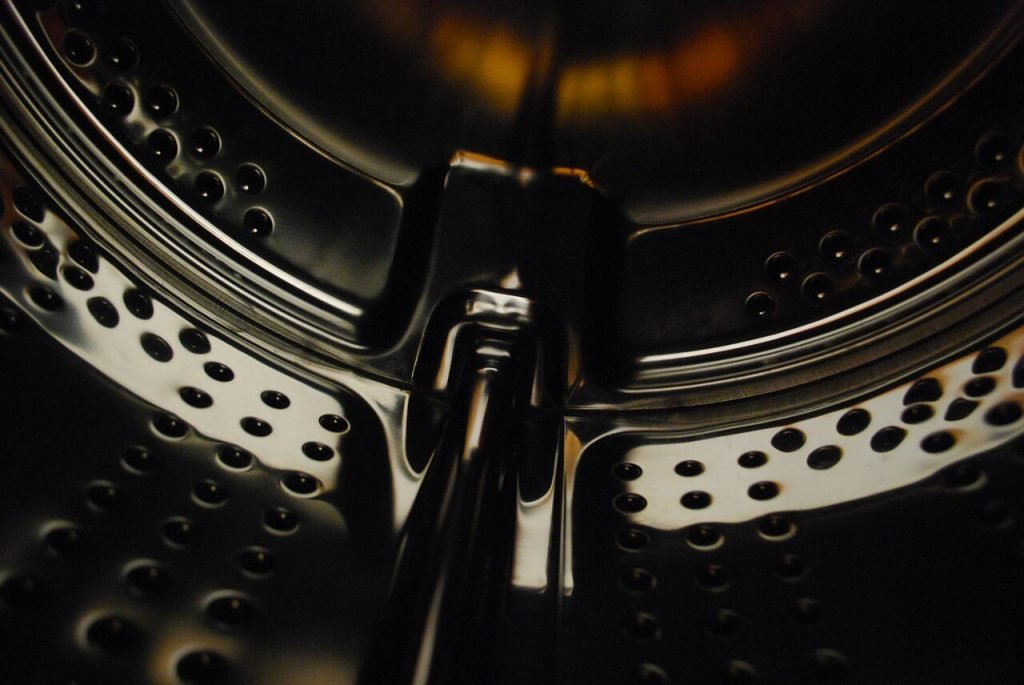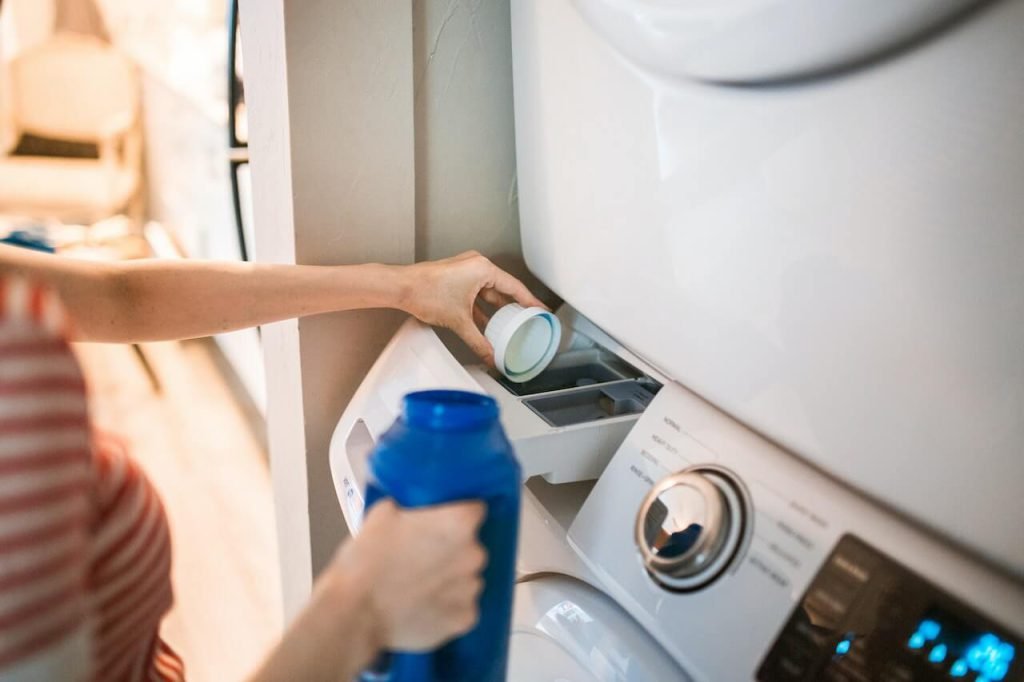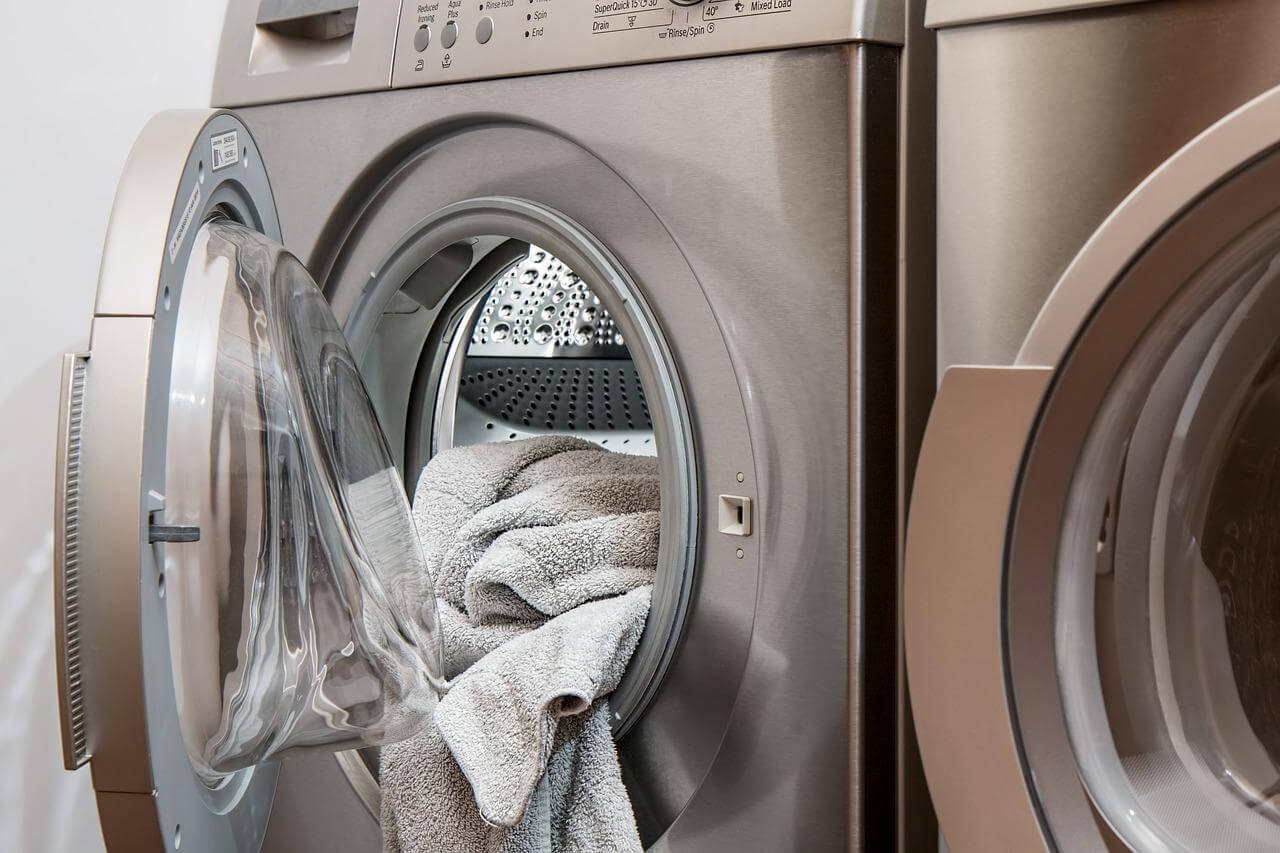Let’s go over how your washing machine components should be cleaned, then how to clean the outside surface, including the rubber seal and door gasket.
We will also look at removing mold and mildew from your washer using vinegar or bleach. We will also cover what you need for a successful cleaning session, including detergents, bleach or vinegar, gloves, a bucket or sink with soap water, towels or rags for drying parts as well as an old toothbrush for
Why is it Important To Have a Clean Washing Machine?
A clean washing machine is essential because it will not only improve the machine’s performance but also make it last longer.
In this section, we will discuss why it is essential to have a clean washing machine and some of the things you can do to maintain it.
Signs your washing machine needs cleaning
If your washing machine smells terrible or makes strange noises, it might be time to clean it.
The smell of your clothes signifies that your washing machine needs cleaning. If you are not cleaning it regularly, you should start doing so to avoid any health problems.
We recommend that you clean the washing machine every three months or so.
Top 6 Washing Machine Maintenance Tips That Will Keep Your Laundry Looking Fresh!
If you want to maintain your washer and keep it running smoothly for years, read on.
- Clean the lint filter after each load of laundry. This will prevent clogs and help maintain your washer’s airflow.
- Regularly wipe down the machine’s exterior with a damp cloth or sponge. This will ensure mold or mildew doesn’t grow on the machine’s surface.
- Check your washer’s water level periodically to ensure it is not too full or too low. If it is too high, this can cause leaks and water damage to floors and walls in your home. If it is too low, this can cause clothes to be damaged due to a lack of agitation during the wash cycle.
- Use a cup of vinegar in the rinse cycle to naturally cleanse your clothes.
- The filter and pump are common areas for mold, so keep them clean and replace filters regularly.
- Clean your water dispenser monthly by filling it with fresh water and scrubbing it with a scrub brush under running water until all grime is removed. This will help prevent the growth of mold and mildew.
Clean a Washing Washer in Under 20 Minutes with vinegar
Time needed: 15 minutes
Here are the steps to cleaning your washing machine quickly and easily with vinegar:
- Pour 1-2 cups of vinegar into the washer’s drum.
- Add 1/4 cup of baking soda to the drum.
- Run a complete cycle with cold water only.
- If residue is left over on the drum, use a scrub brush to remove it. Rinse thoroughly before drying it off with a towel or cloth.

Cleaning a washing machine with bleach
Please note: It is important never to mix bleach with other chemicals. The reaction can create toxic fumes that will cause harm if breathed in. If using bleach, please be cautious and leave a window open while using gloves to protect the skin.
- Put a mop or garment not used in a washing machine, and pour about half a cup of bleach.
- Run the washing machine on high heat in the shortest program you have in the machine.
- When the machine finishes work, wipe all the parts (including the machine door) with the wet mop you used to start the engine.
- Rerun the engine on the shortest program when the mop is still inside the machine. This step will help us eliminate bleach residue and odor in the washing machine.

How to clean the different parts of your washing machine
How to clean a washing machine drum inside
Often, there will only be a small amount of water left in the washing machine after running a load of laundry. It can start to smell bad if it doesn’t get cleaned out between the drum and other areas. Modern machines often use less water than old ones, so most people don’t have to worry about this issue with their devices.
Find your filter and remove it. Need to lift the agitator door? With top-loading machines, unscrew from the top of the dispenser. Leave water sample near or outside – it can be used for maintenance.
Be sure to empty the filter and scrub it carefully to clean any debris from inside. Make sure to rinse it well with water afterward, then allow the filter to air dry before placing back in the machine.

How to clean a washing machine gasket
To clean the washing machine gasket, spray a regular cloth with a cleaning solution and wipe clear. Please pay particular attention to its folds and crevices. It’s best to use a soft-bristled brush to scrub away dirt when you can’t reach it, or it has accumulated on the bottom of the gasket.
As a general rule, it’s best to turn off the dishwasher when it is not in use and leave the cracked door to help water evaporate.
How to clean a washing machine soap dispenser
regularly as you can. Make sure you’re using a soft cloth with water and detergent and wash the remaining parts with that before reassembling
Soak a tray or drawer in warm, soapy water for about thirty minutes. After soaking, wave a sponge over the items, and wipe with a microfiber cloth. Use an old toothbrush to get into some crevices on items that quickly accumulate dirt.
Make sure to dry your machine well before placing any appliances back inside.

Cleaning tips for front loader washing machines
Front loaders are the most common type of washing machine, but they are also at most risk of mold growth because of their door design.
Front loaders have a door that opens inwards, which traps water inside and leaves it to sit in the drum. This is a problem because the moisture can’t escape and instead evaporates into the air. This makes it more humid inside the machine and creates a perfect environment for mold to grow.
The best way to prevent this is by ensuring you dry your clothes as soon as possible after you wash them.
Every week, you should inspect your front loader door and ensure it does not have any dirt or debris. Pull the rubber back to examine between the folds and wipe it off with a rubber-safe, antibacterial cleaner. If you can see black marks on the outsides of your appliance, mold, and mildew are growing inside.

Cleaning tips for top loader washing machines
A top loading washing machine is a type of washing machine that has a drum on top. This washing machine is usually cheaper than other types, but it also has some disadvantages. One of the notable disadvantages of top loader washing machines is that they are more challenging to clean than front loader washing machines.
One way to keep your top-loading washer clean and free from mold and mildew is to use a liquid laundry detergent that contains bleach. This will help keep the clothes hygienic for extended periods, resulting in less frequent washings. It will also keep the mold and mildew growth to a minimum, which can cause damage to your clothes, your home, and even your health.
How to maintain your washing machine with regular cleaning
Preventing odors and stains on your clothes is a great way to keep them in pristine condition. The washing machine’s main moving parts need to be cleaned as often as possible, and you should also add regular cleaning products like vinegar to help maintain stain prevention.
- At least once a month, run your washing machine on a hot cycle with a cleaning solution to sanitize the drum and flush the pipes. You can use any DIY solutions we’ve mentioned or buy a specialist wash designed for this task.
- Leaving wet clothes in the washing machine can make a moist environment where microorganisms can thrive. Keep your clothes out of the washing machine by moving them soon after you have finished wearing/carrying them. You will also prevent them from accumulating unpleasant smells or getting musty.
- Keep your laundry room as dry as you can by using a dehumidifier. You’ll have a machine that lasts significantly longer this way.
- Leaving the door open is suitable for your washing machine because it allows air to circulate, prevents mold and mildew from building up, and prevents moisture collection. Most newer devices have a latch called a magnetic door holder or plunger that allows the door to be propped open between an inch to two inches. Aftermarket latches are a quick fix for older machines that may not use the same latches anymore and will also do the same job. These latches are easily found at hardware stores or online and can make a big difference.
FAQ
To keep your washing machine in good condition, you must clean it every few months.
It would help if you also cleaned the inside of your washing machine every time you do a load of laundry. This will help prevent any problems with the machine and ensure it runs at peak performance.
The best way to clean a washing machine is to use a cleaner. The user needs to read the instructions on the product before using it.
Stains can permanently damage your washing machine if they are not removed properly. Here are some ways to remove them:
– Use a soft cloth and dish soap to scrub the stains.
– Add a cup of white vinegar to the wash cycle before you start it. This will help remove some stains and give your machine a fresh start.
– If you have an older model, try using bleach and regular detergent for tougher stains.











Add comment